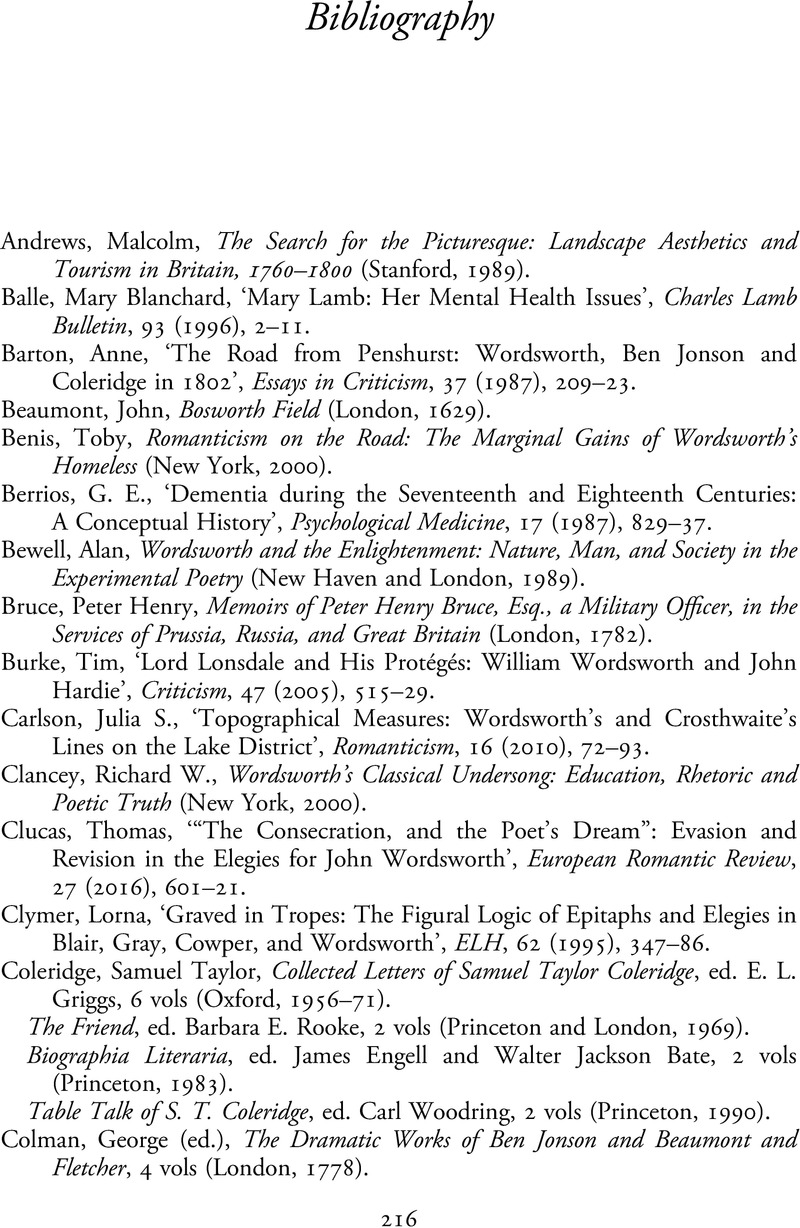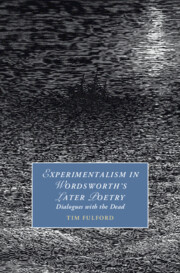Book contents
- Experimentalism in Wordsworth’s Later Poetry
- Cambridge Studies in Romanticism
- Experimentalism in Wordsworth’s Later Poetry
- Copyright page
- Contents
- Figures
- Acknowledgements
- Abbreviations
- Introduction
- Chapter 1 The Death Zone
- Chapter 2 Chronicle of a Death Untold:
- Chapter 3 Wordsworth in Homage:
- Chapter 4 Wordsworth at Sea
- Chapter 5 Dementia Poetics in Wordsworth’s Late Memorials
- Chapter 6 Wordsworth’s Bardic Vacation
- Chapter 7 Hybrids, Hermits and Hut Dwellers:
- Chapter 8 An Aged Man Writes about an Aged Man
- Bibliography
- Index
- Cambridge Studies in Romanticism
- References
Bibliography
Published online by Cambridge University Press: 15 June 2023
- Experimentalism in Wordsworth’s Later Poetry
- Cambridge Studies in Romanticism
- Experimentalism in Wordsworth’s Later Poetry
- Copyright page
- Contents
- Figures
- Acknowledgements
- Abbreviations
- Introduction
- Chapter 1 The Death Zone
- Chapter 2 Chronicle of a Death Untold:
- Chapter 3 Wordsworth in Homage:
- Chapter 4 Wordsworth at Sea
- Chapter 5 Dementia Poetics in Wordsworth’s Late Memorials
- Chapter 6 Wordsworth’s Bardic Vacation
- Chapter 7 Hybrids, Hermits and Hut Dwellers:
- Chapter 8 An Aged Man Writes about an Aged Man
- Bibliography
- Index
- Cambridge Studies in Romanticism
- References
Summary

- Type
- Chapter
- Information
- Experimentalism in Wordsworth's Later PoetryDialogues with the Dead, pp. 216 - 222Publisher: Cambridge University PressPrint publication year: 2023

